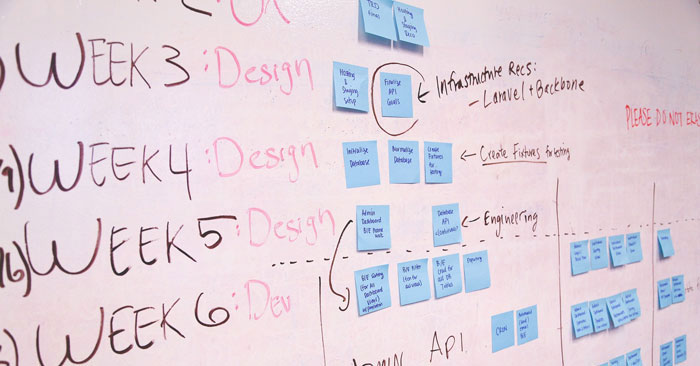Using an Agile methodology doesn’t necessarily mean that you should not have a long-term roadmap or product planning. This is especially true in case of software development. Having a long-term planning gives your team a vision of what's coming next, and keeps you a step ahead of your competitors.
Beginning from 2001, developers everywhere, including offshore ones, are following four primary tenants – of which the fourth one comes first in prominence. It is as follows:
Taking in Consideration changes over a long-term Strategy
To begin with, it might look like that long-term planning is not suitable for the idea of an agile development. On the contrary, a roadmap ensures the team always stays determined in its ambition to achieve a unified goal.
The question is: how to maintain both? How to make it possible to be a part of an organization which works with an agile methodology, using small iterations, while envisioning the bigger picture for any future prospects?
A Fast Improvement is Not the Opposite of Planning
Following an Agile approach does not necessary mean, not to design for upcoming days. Unfortunately, the tradition so far encourages not designing product roadmap beforehand. This is a huge mistake considering a vision takes shape during planning. In spite of the Agile approach you are following, having a product vision is a significant part.
Let’s get further...
Planning in software development is the way to reach the ultimate solution for customer problems. A long-term planning for software development, which is aimed toward customer satisfaction, fuels a team’s vision. A vision that may keep the team focused on the bigger picture without being dragged into mere features. This enables a team to stay focused on solving a problem.
When there is lack of planning, teams are more likely to get distracted by ‘what to come next’. Without a thorough guideline to stick them together, teams could be dispersed from project to project. Of course they will be solving some issues; but when it comes to a total solution there may be some lacking. Working on the wrong problem is not the idea here.
Our nearshore software development approach is focused not only on the immediate goals of the upcoming Sprints, but also to discover the big picture. This planning provides a context not only for the Client, but also for the Team and Stakeholders of the north we are following.
Let’s see how that works out
During the course of software development, there are things that we know will change, but there are some others that won’t. This primarily depends on context in which the software will be used:
- Business goals
- Users’ needs
- Business needs
Planning a software design with this in mind doesn’t hinder your agility. There is still enough room for pivoting around user needs.
Product designing happens initially; but what keeps the team motivated is their response. There is no doubt that feedbacks are great; but if you invest all your time in hoping and guessing and responding to feedbacks, it will only cost you time. A plan always keeps you stick to the core problem, which allows you to set up the roadmap for a viable solution to a particular problem. This is none other than a design plan that we are talking about!
Optimizing the Team with Planning and Agility
The way an Agile development makes a team more proficient is not questionable. However, it is not always possible to keep on producing quality end results without a sound planning.
A planning in terms of software development establishes the bar for everything we can perceive. It is all about the questions asked, data gathered, and, finally, the deep dive into the customer’s world to know the business requirements and other needs.
Every organization is different from each other. At DevWise we combine both agile methodologies and planning, to produce products that can achieve not only the current needs, but can be extended and adapted over the time.







